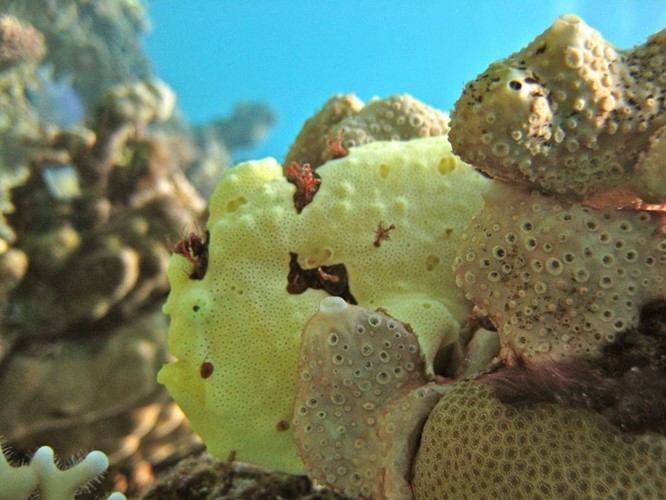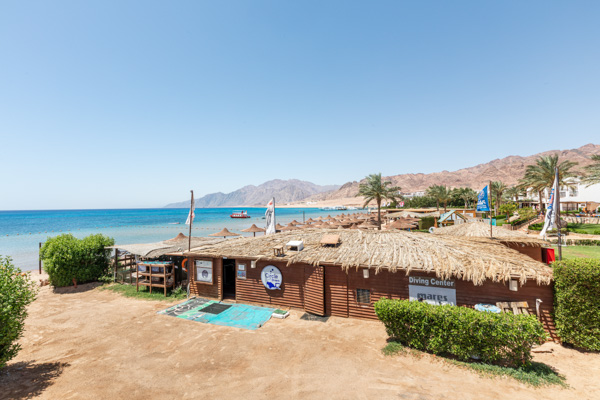The Ever Elusive Frogfish

Recently there have been some sightings of the elusive Frogfish on the reefs of Sharm el Sheikh. Although they can be more commonly seen on the reefs of Dahab, there is still something special when you spot a frogfish while diving in the Red Sea. Normally when spotted in their hiding place, a frogfish will remain there for two to three weeks. In recent months the Frogfish has been seen on the reefs of Temple and Jackson but also in the bay at Naama Bay. However, when they get too crowded with too many curious divers visiting they will often move themselves. The winter months with less crowded dive sites are the perfect time to see a Frogfish. The frogfish, scientifically known as Antennariidae, belongs to the order Lophiiformes Despite their relatively small size, ranging from just a few centimeters to about 40 centimeters in length, they are a highly diverse and intriguing group of fish. One of the most remarkable aspects of frogfish is their uncanny ability to blend seamlessly into their surroundings. Their bodies are covered in irregularly shaped skin flaps and spines, which often mimic the appearance of sponges, algae, or even coral. Their coloration can vary widely, adapting to the specific environment in which they reside. This incredible camouflage helps them hide from both prey and potential predators. Frogfish are not just passive masters of disguise; they are also cunning ambush predators. Their primary method of hunting involves an ingenious tactic - the use of a modified dorsal spine called an "illicium" with a fleshy lure at the end. This lure resembles a small, wiggling worm or insect, which they dangle in front of their mouth, enticing curious prey to approach. As unsuspecting prey, such as small fish or crustaceans, get drawn in by the allure of the frogfish's lure, they are met with a swift and powerful strike. The frogfish's mouth opens in just a fraction of a second, creating a vacuum that sucks in the prey with astonishing force. Their expandable stomachs allow them to consume prey almost as large as themselves, enabling them to capture a wide range of potential meals. Although frogfish move very slowly ironically they have one of the fastest strike speeds of any animal on earth. They move about by gulping water in their massive mouths and then forcing it through their gills as the frogfish moves along the reef or bottom of the sea. Frogfish possess unique reproductive behaviors. They are typically hermaphroditic, meaning they have both male and female reproductive organs. When they find a suitable mate, they engage in a fascinating courtship ritual that includes various behaviors and color changes. Once fertilization occurs, female frogfish lay their eggs in gelatinous masses that resemble a cluster of grapes, attaching them to a nearby surface. The lifespan of a frogfish varies depending on the species and environmental factors, but it generally ranges from one to five years. During this time, they go through various stages of development, from eggs to larvae to juvenile and eventually mature adults. Assuming you have found one of these magnificent fish in Sharm El Sheih or Dahab, there are several great photos you can get. Frogfish are cannibalistic and will feed on another frogfish should you be lucky enough to see two of them. Relaxing their jaw or yawning can make a cool photo. Dangling of the esca (the bait) can be a stunning photo if timed right. Feeding can of course provide stunning shots, especially when trying to feed on animals larger than themselves. The mating dance can be a joy to watch and certainly something worth catching on camera. Generally ambulating through the water the frogfish can be a sight to behold. When taking that shot, remember patience is important – don’t try to touch, poke, or antagonize the frogfish. Lens choices can range from 105mm to 10.5mm depending on the size of the frogfish. Side lighting can help show off the intricate details of any camouflage patterns. Don’t try to herd frogfish together for a photo – they will eat each other! (Although the chances of finding two together are pretty slim!) Use a shallow depth of field to create some bokeh in the background which will help isolate the fish from the substrate. Try to leave space in the frame for any of their sudden behavioral movements. If you should get a good photo of the frogfish, please feel free to share to our Circle Divers Instagram page so we can all take a good look – some divers have been diving on the reefs of Sharm El Sheikh for years and never been lucky enough to see the frogfish.What’s So Special About the Frogfish?
Hunting Strategies: Lure and Ambush
Reproduction and Lifespan
Best Photo Opportunities for a Frogfish Sighting


